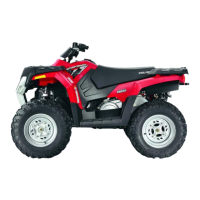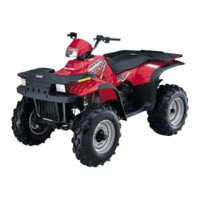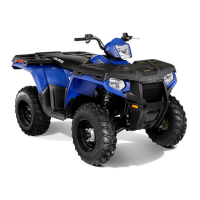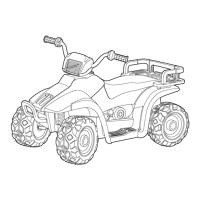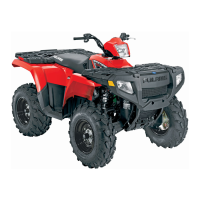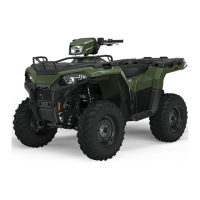CLUTCH
6.2
PVT OPERATION
The Polaris variable transmission (PVT) consists of three major assemblies: 1) drive clutch; 2) drive belt; and
3) driven clutch. The internal components of the drive clutch and driven clutch control clutch engagement (for
initialvehiclemovement), clutchupshiftingandbackshifting. Duringthedevelopment ofanATV,the PVTsystem
is matched first of all to the engine power curve; then to average riding conditions and to vehicle design usage.
Modifications to the PVT or variations of components at random are never recommended. Proper PVT system
setup and careful inspection of existing components must be the primary objective when troubleshooting and tun-
ing.
W ARNING
All PVT system maintenance repairs must be performed only by an authorized Polaris service technician
who has attended a Polaris sponsored service training seminar and understands the proper procedures as out-
lined in this manual. Because of the critical nature and precision balance incorporated into the PVT sys-
tem, it is absolutely essential that no attempt at disassembly or repair be made without factory autho-
rized special tools and service procedures.
DRIVE CLUTCH OPERATION
The drive clutch primarily senses engine RPM. The two major components whichcontrol its shifting function are
the shift weights and the coil spring. When the engine RPM is increased,the centrifugalforce ofthe shiftweights
working against the coil spring increases. When this force reaches a force higher than the preload in the spring,
the moveable sheave of the drive clutch will move inward, contacting the drive belt. The force will pinch the belt
betweenthespinningsheavesandcause thedrive belt to move. This movement inturn rotatesthe drivenclutch.
At light throttle settings the drive belt will stay low inthe driveclutch andhighinthe drivenclutch. As engineRPM
increases, sodoes thecentrifugalforce ontheshift weights,causingthedrivebelttobeforcedupwardin thedrive
clutch and downward into the driven clutch. The forces in the driven clutch will now affect the upshift.
DRIVEN CLUTCH OPERATION
The driven clutch primarily senses torque. It opens and closes according to the forces applied to it from the drive
belt and the transmission input shaft. If the torque resistance on the input shaft is greater than the load from the
drive belt, it will keep the drive belt outward at the top of the driven clutch sheaves. As the throttle setting and
engine horsepower increase, there will be a greater load on the drive belt, pulling the belt down into the driven
clutch and up on the drive clutch. This action, which increases the driven clutch speed, is called upshifting.
If the throttle setting remains the same and the vehicle is subjected to a heavier load, the driven clutch senses
thisload,movingthebeltbackuponthesheavesofthedrivenclutchanddownintothesheavesofthedriveclutch.
This action, which decreases the driven clutch speed, is called downshifting.
Insituationswhereloadsvary(suchasuphillanddownhill)andthrottlesettings are constant, the drive anddriven
clutchesarecontinuallyshiftingtomaintainoptimumengineRPM. AtfullthrottleaperfectlymatchedPVTsystem
will hold the engine RPMs at the peak of the power curve. This RPM should be maintained during clutch upshift
andbackshift. Inthis respectthePVTsystemissimilar toapowergovernor . Rather thanchangethrottleposition,
as a governor does, the PVT system changes engine load requirements by either upshifting or downshifting.
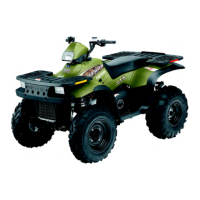
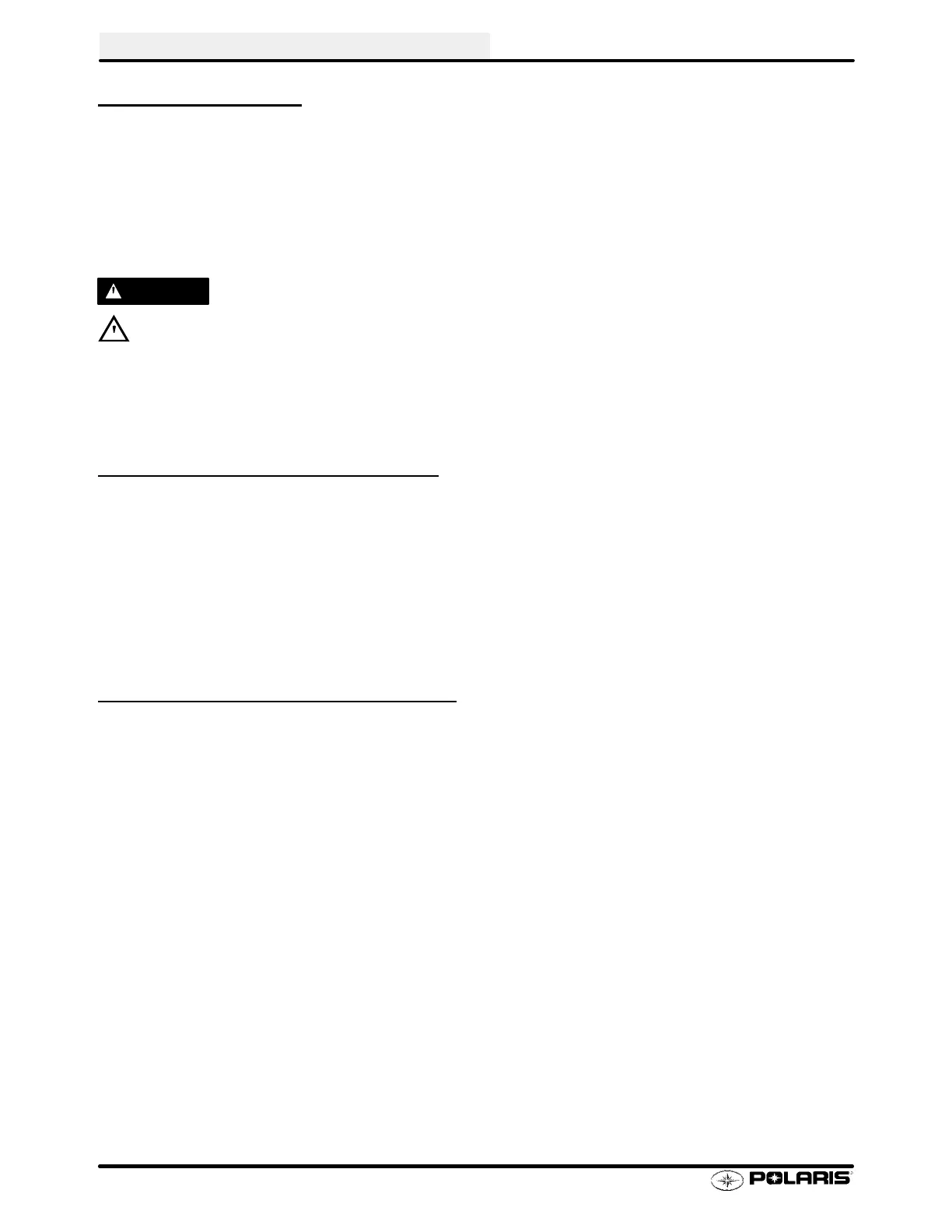